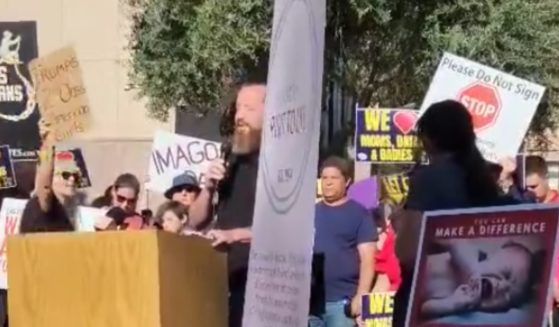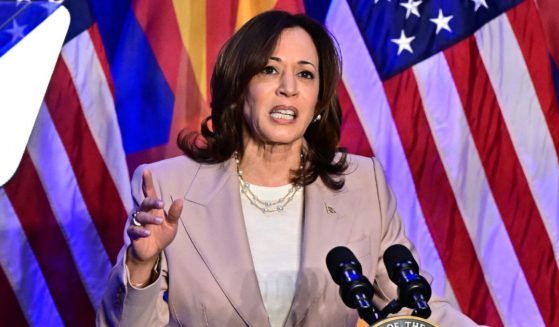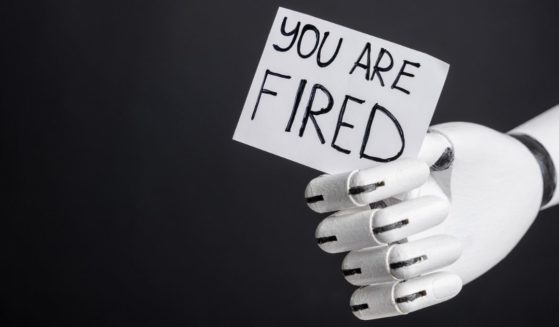Former Stanford Neuroradiology Professor: Here Are 5 Solid Reasons To Reopen Communities Now
It has been a rough six weeks or so for Americans who suddenly found themselves affected by not only the country’s health crisis but also its associated shutdown of American life — and the economic impacts of that.
The situation has been unprecedented for people used to working, traveling and socializing.
Restaurants are empty. Beards and hair have become unkempt. Sports, movies, air travel and visits with friends and family are part of a past we want back.
A show about tigers and their deviant owners captured much of the country’s attention — which worked for a short while for some people.
Fear, being the initial motivator for shuttering life as we have known it, led us in the early stages.
There are still those attempting to stoke that fear — even as new information gives us great cause for hope.
It is data, though, that we have in our favor to present to those who say we should continue living in the shelters of our homes for many more weeks lest we risk unintentionally killing ourselves and those we cherish.
Dr. Scott W. Atlas, a researcher at Stanford University’s Hoover Institution who was chief of neuroradiology at the Stanford Medical Center from 1998 to 2012, believes it is time to end broad lockdowns and open up our communities.
In an opinion piece Wednesday in The Hill, Atlas listed significant reasons why we should leave the security (or prison) of our homes.
Arguing that we are now in the “containment phase,” the doctor wrote, “Leaders must examine accumulated data to see what has actually happened, rather than keep emphasizing hypothetical projections; combine that empirical evidence with fundamental principles of biology established for decades; and then thoughtfully restore the country to function.”
Atlas then listed five key facts that are being ignored by proponents of extended lockdowns.
No. 1: Your odds of dying are extremely low.
“The overwhelming majority of people do not have any significant risk of dying,” he wrote. “If you do not already have an underlying chronic condition, your chances of dying are small, regardless of age. And young adults and children in normal health have almost no risk.”
Atlas cited a Stanford University study of antibody testing that estimated COVID-19 fatality rates are much lower than those touted by the World Health Organization.
According to the study, the death rate if infected is likely between 0.1 to 0.2 percent — just one or two people out of every 10,000 with the virus.
No. 2: Protecting older, at-risk people would eliminate hospital crowding.
The doctor said we should focus on safeguarding older Americans and those with health problems that put them at greater risk.
“Half of all people testing positive for infection have no symptoms at all. The vast majority of younger, otherwise healthy people do not need significant medical care if they catch this infection,” Atlas wrote.
Analyzing cases of the illness and antibodies of those who never had symptoms yields data showing those who have died overwhelmingly had one or more underlying health conditions. Even in Americans ages 65 to 74, the rate of hospitalization is a mere 1.7 percent.
No. 3: Avoiding one another will drag this thing out longer than necessary.
Atlas further argued that our policy of isolating ourselves is “prolonging the problem” and preventing less-vulnerable people from becoming immune, which ultimately endangers those who are at risk.
“We know from decades of medical science that infection itself allows people to generate an immune response — antibodies — so that the infection is controlled throughout the population by ‘herd immunity,'” the doctor said. “Indeed, that is the main purpose of widespread immunization in other viral diseases — to assist with population immunity.”
The vast number of asymptomatic cases “has been falsely portrayed as a problem requiring mass isolation,” wrote Atlas. “In fact, infected people without severe illness are the immediately available vehicle for establishing widespread immunity. By transmitting the virus to others in the low-risk group who then generate antibodies, they block the network of pathways toward the most vulnerable people, ultimately ending the threat.”
No. 4: There are people with other medical needs that are not being addressed.
Atlas also brought up an important point that’s often overlooked: Americans are also dying as a result of being prevented from attending routine doctor visits or receiving other crucial care.
“Critical health care for millions of Americans is being ignored and people are dying,” he wrote. “Most states and many hospitals abruptly stopped ‘nonessential’ procedures and surgery. That prevented diagnoses of life-threatening diseases, like cancer screening, biopsies of tumors now undiscovered and potentially deadly brain aneurysms.”
“An estimated 80 percent of brain surgery cases were skipped. Acute stroke and heart attack patients missed their only chances for treatment, some dying and many now facing permanent disability,” Atlas said.
No. 5: We now have the data to protect our most vulnerable and can take measures to do so.
The doctor concluded that we are now armed with the knowledge that there is a population of at-risk people who can be protected using “targeted measures.”
“The overwhelming evidence all over the world consistently shows that a clearly defined group — older people and others with underlying conditions — is more likely to have a serious illness requiring hospitalization and more likely to die,” Atlas wrote. “Knowing that, it is a commonsense, achievable goal to target isolation policy to that group, including strictly monitoring those who interact with them.”
He concluded that we should “institute a more focused strategy like some outlined in the first place: Strictly protect the known vulnerable, self-isolate the mildly sick and open most workplaces and small businesses with some prudent large-group precautions.
“This would allow the essential socializing to generate immunity among those with minimal risk of serious consequence, while saving lives, preventing overcrowding of hospitals and limiting the enormous harms compounded by continued total isolation,” Atlas wrote.
While we need to be cautious as we slowly reopen our communities and start to return to normal, the argument that we should continue living in fear and isolation is simply not supported by the evidence.
Truth and Accuracy
We are committed to truth and accuracy in all of our journalism. Read our editorial standards.












